ENEM – 2020 – ELECTRODYNAMICS – EN
ENEM – 2020 – ELECTRODYNAMICS
ELECTRICITY
ELECTRODYNAMICS
01- (ENEM-MEC-018)

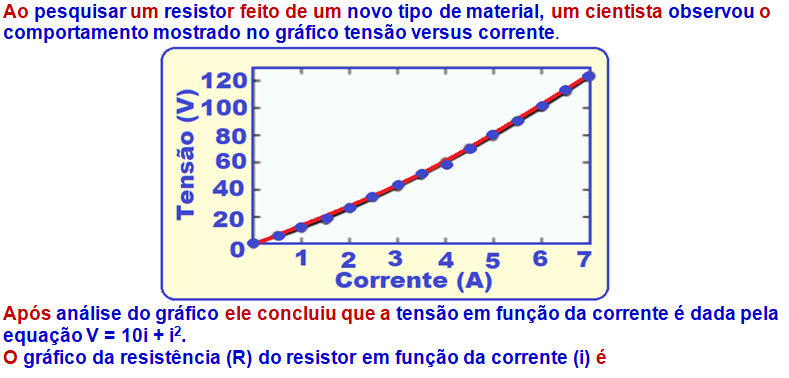
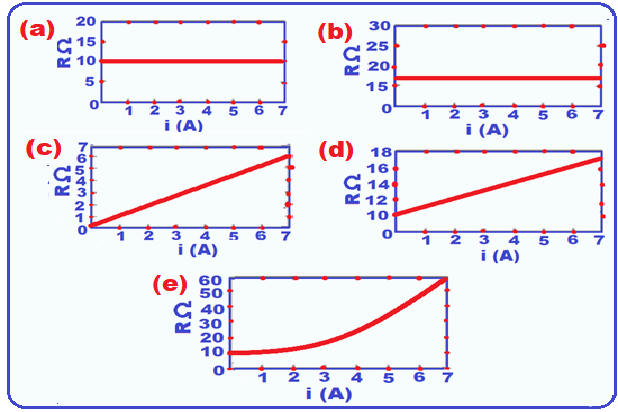

02- (ENEM-MEC-018)

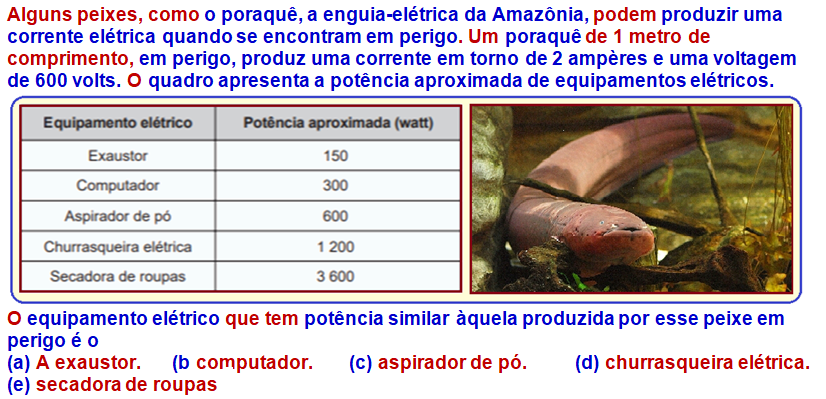

03- (ENEM-MEC-019)

A house has an undersized electrical cable, with a resistance of 10 Ω , that connects it to the 120 V electrical grid.
In this house, five lamps, with a resistance of 200 Ω, are connected to the same circuit as a television with a resistance of 50 Ω, as illustrated in the diagram.
The television only works with voltage between 90 V and 130 V.
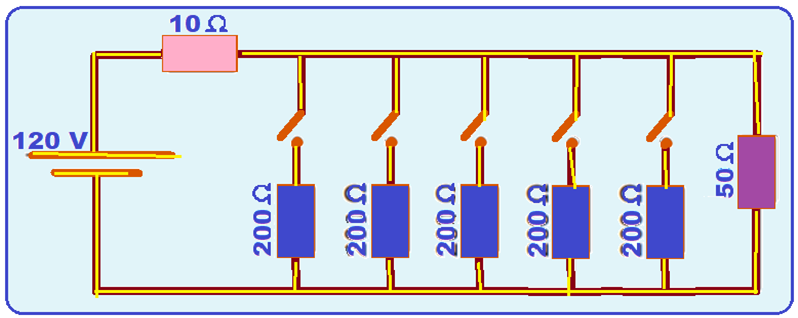
The maximum number of lamps that can be turned on without the television stopping working is:
![]()
Note in the circuit provided that, for the 50 Ω television to work supplying the maximum number of lamps connected and associated in parallel, this TV must be subjected to the lowest voltage between 90 V and 130 V, which is 90 V.
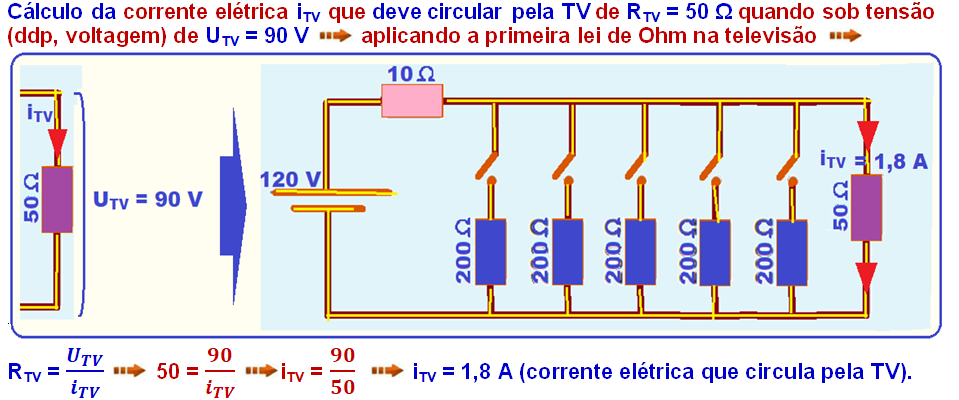

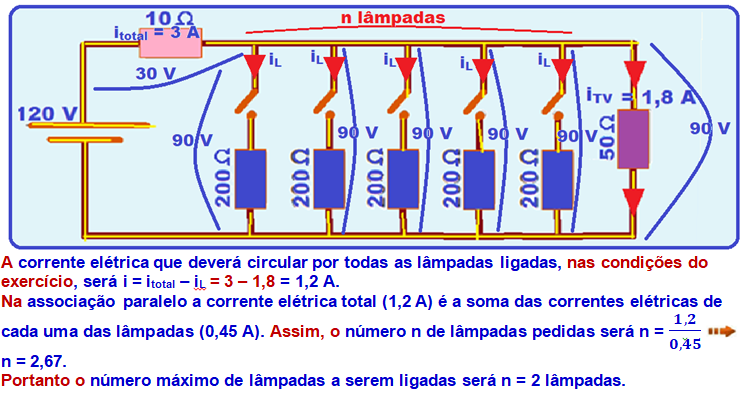
R-B
04- (ENEM-MEC-019)

High-voltage power lines generate a variable magnetic field sufficient to induce electric current in the fence wire. Both livestock and farm or utility workers must be very careful when approaching a fence that is close to a high-voltage power line, as touching the fence wire could result in electric shock.

To minimize this type of problem, you should:
(A) Ground the fence wires.
(B) Add a safety fuse to the fence.
(C) Ground the high voltage network.
(D) Install a safety fuse in the high voltage network.
(E) Use wires covered with insulation in the high voltage network.
When you touch a wire carrying an electric current with your hands, this current, due to the difference in potential between the wire and the ground in contact with your feet, is diverted through your body, making it function as an electrical conductor “ground wire”.
This passage of electric current through your body is the electric shock.
Therefore, by connecting a “ground wire” between the fence and the ground (creating a grounding) you will be minimizing the risk of this electric shock.
A- A
05- (ENEM-MEC-017)


Electronic devices that use low-cost materials, such as semiconductor polymers, have
have been developed to monitor the concentration of ammonia (a toxic, colorless gas) on poultry farms.
Polyaniline is a semiconductor polymer that has its nominal electrical resistance value quadrupled when exposed to high concentrations of ammonia.
In the absence of ammonia, polyaniline behaves as an ohmic resistor and its electrical response is shown in the graph.
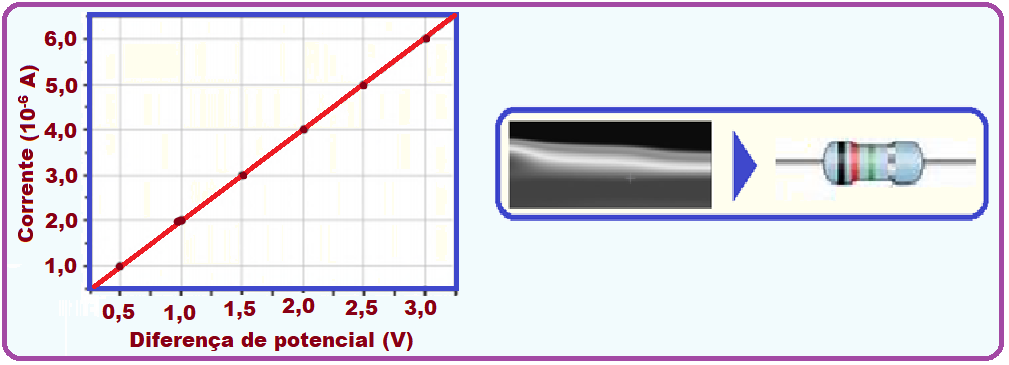
The value of the electrical resistance of polyaniline in the presence of high concentrations of ammonia, in ohms, is equal to
![]()


06- (ENEM-MEC-017)


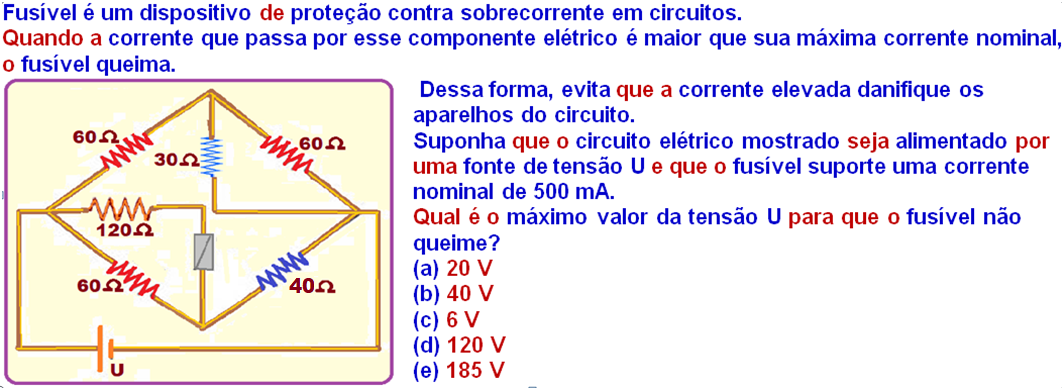
Let’s analyze only the lower part of the circuit where the currents i, i1 and i2 circulate, since with

Only with this data is it possible to calculate the required voltage U.
Note that the section with the resistor R2 = 120 Ω is traversed by the current i2 = 500 mA = 0.5 A (nominal current supported by the fuse).
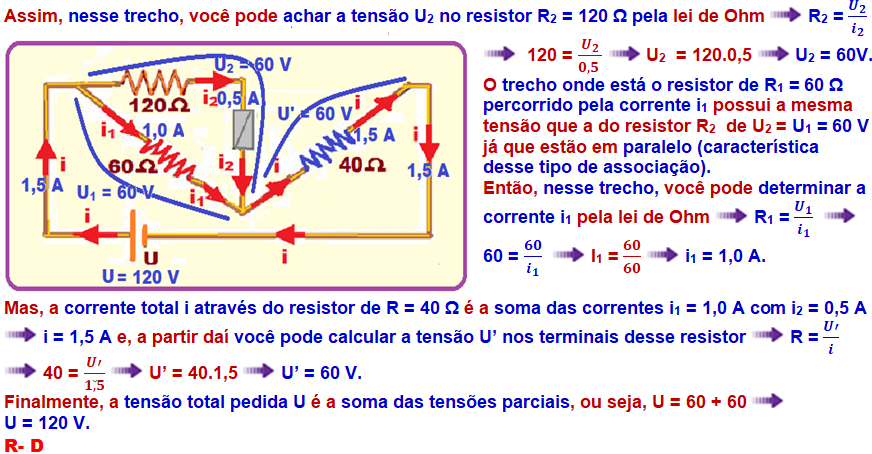
07- (ENEM-MEC-017)


In the manual provided by the manufacturer of a 220V electric shower, a graph is presented showing the variation in water temperature as a function of the flow rate for three conditions (warm, hot and super hot).
In super hot condition, the dissipated power is 6500 W.
Consider the specific heat of water equal to 4200 J/(kg C) and the density of water equal to 1 kg/L.
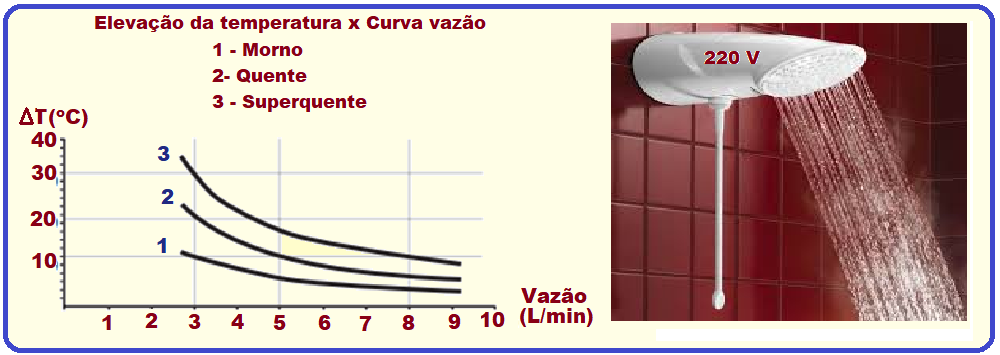
Based on the information given, the power in the warm condition corresponds to what fraction of the power in the superhot condition?
![]()
The electrical resistance of the shower, when heated, completely transforms electrical energy (Welectric) into thermal energy (heat Q) ![]() Welectric = Q.
Welectric = Q.


08- (ENEM-MEC-017)


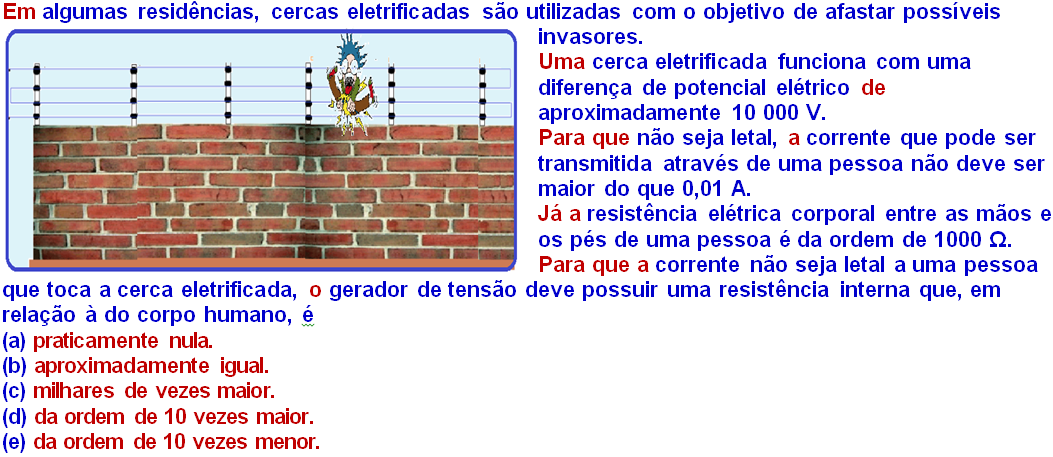
See the figure and diagram below where E = 10,000 V is the electromotive force of the generator, r is its internal resistance, Rh = 1,000 Ω is the person’s body resistance and i = 0.01 A is the maximum non-lethal current through the person’s body.
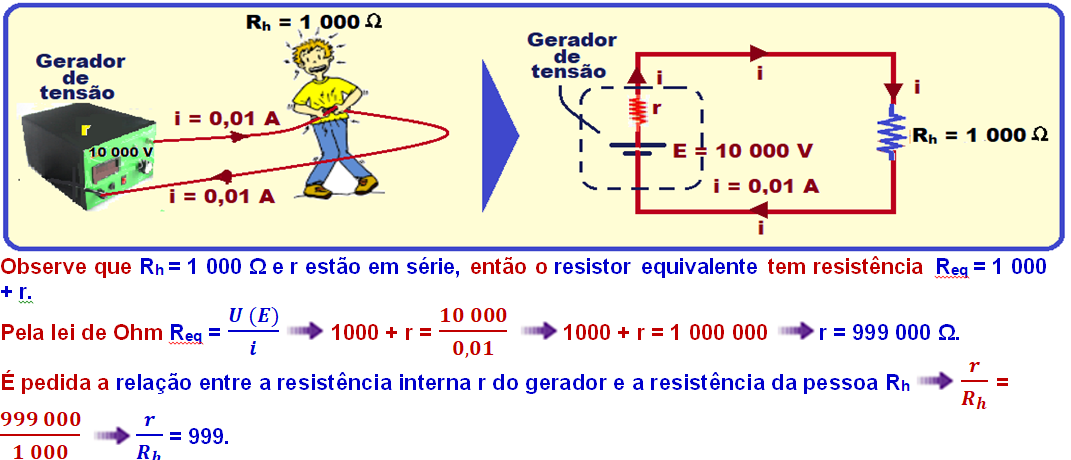

ELECTROMAGNETISM
09- (ENEM-MEC-019)

The time-of-flight mass spectrometer is a device used to measure the mass of ions . In it, an ion with electric charge q is launched into a region of constant magnetic field B, describing a helical trajectory, as shown in the figure.

This trajectory is formed by the composition of a uniform circular movement in the yz plane and a translation along the x axis.
The advantage of this device is that the angular velocity of the ion’s helical motion is independent of its initial velocity.
The device then measures the time t of flight for N turns of the ion. Therefore, based on the values q, B, N and t, the mass of the ion can be determined. The mass of the ion measured by this device will be
![]()
If you haven’t mastered the theory, here it is:
Charge q thrown obliquely into a uniform magnetic field

Analyzing the exercise based only on the component parallel to the movement that produces a uniform circular motion as summarized below:
Electric charge q launched with velocity ![]() perpendicular to the lines of induction of a uniform magnetic field
perpendicular to the lines of induction of a uniform magnetic field![]()
Note that in this case the angle between ![]() and
and ![]() is 90º (they are perpendicular) and that sin90º = 1.
is 90º (they are perpendicular) and that sin90º = 1.




 A- A
A- A
10- (ENEM-MEC-017)


To demonstrate the process of transforming mechanical energy into electrical energy, a student builds a small generator using:
![]() a copper wire of diameter D wound into N circular turns of area A;
a copper wire of diameter D wound into N circular turns of area A;
![]() two magnets that create in the space between them a uniform magnetic field of intensity B; and
two magnets that create in the space between them a uniform magnetic field of intensity B; and
![]() a gear system that allows you to rotate the coils around an axis with a frequency f.
a gear system that allows you to rotate the coils around an axis with a frequency f.
When the generator was running, the student obtained a maximum voltage V and a short-circuit current i.
To double the value of the maximum voltage V of the generator while keeping the value of the short-circuit current i constant, the student must double the
(a) number of turns.
(b) rotation frequency.
(c) intensity of the magnetic field.
(d) area of the turns.
(e) wire diameter.
If, when operating the generator, the student obtained a maximum voltage V and a short-circuit current i, then the maximum voltage U is the induced electromotive force ![]() of the generator, that is, V = .
of the generator, that is, V = . ![]()
For n turns the induced electromotive force ![]() is given by = n. = n. .
is given by = n. = n. . ![]()
![]()
![]()
To vary the magnetic flux inside the coil association, we can change the value of the magnetic field (B), the area (S), the angle of rotation ( ![]() ) or the number of coils (n).
) or the number of coils (n).
But the statement also requires that, in addition to doubling, ![]() the short-circuit current icc must be kept constant, which is provided by icc = , where r is the internal resistance due to the n turns , which can only happen if you double r.
the short-circuit current icc must be kept constant, which is provided by icc = , where r is the internal resistance due to the n turns , which can only happen if you double r. ![]()
But, by Ohm’s second law the resistance r is given by:

Since the exercise requires doubling the induced potential difference ![]() without changing the short-circuit current icc, in addition to doubling the flux
without changing the short-circuit current icc, in addition to doubling the flux ![]() , we must also double the resistance r of the material. This can be done by changing the material
, we must also double the resistance r of the material. This can be done by changing the material ![]() , the length L or the cross-sectional area S of the wire.
, the length L or the cross-sectional area S of the wire.
The only option that satisfies both conditions at the same time is to double the number n of turns, which doubles the ddp and the material resistance at the same time, and which keeps the short-circuit current unchanged.
A- A
11- (ENEM-MEC-018)

RFID tag communication technology ( called a smart tag) has been used for years to track livestock, train cars, airline baggage and cars at toll booths.
A cheaper model of these tags can operate without batteries and consists of three components: a silicon microprocessor; a metal coil, made of copper or aluminum, that is wound in a circular pattern; and an encapsulator, which is a glass or polymer material surrounding the microprocessor and the coil. 
In the presence of a radio frequency field generated by the reader, the tag transmits signals.
The reading distance is determined by the size of the coil and the power of the radio wave emitted by the reader .
The tag works without batteries because the
(A) electric field of the radio wave shakes electrons in the coil.
(B) electric field of the radio wave creates a voltage in the coil.
(C) magnetic field of the radio wave induces current in the coil.
(D) magnetic field of the radio wave heats the wires in the coil.
(E) magnetic field of the radio wave decreases the resonance inside the coil .
The tag reader emits a radio frequency field (by means of radio magnetic waves) to the electronic identification tag (tags) which return these radio frequency signals to the readers.

Readers capture this information when the variable magnetic flux produced by the return of these waves causes an induced electric current to appear in the reader’s coil (coil).
According to Faraday’s Law, this electric current creates a variable magnetic field in the coil, which is detected by the reader, which records this information.
R-C
